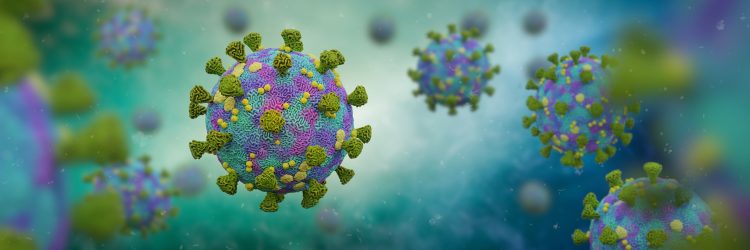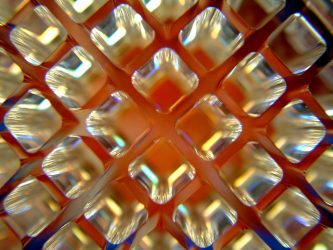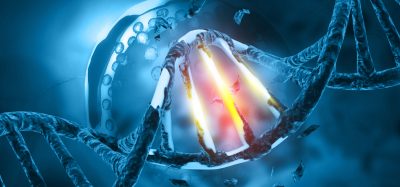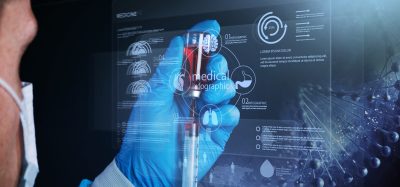Assessing compound activity to accelerate drug discovery
Posted: 22 June 2021 | Victoria Rees (Drug Target Review) | No comments yet
In this article, Drug Target Review’s Victoria Rees explores a new screening platform that assesses the biological activity of molecules to identify potential drugs. Using their new technique, researchers from the US National Institutes of Health (NIH) identified potential COVID-19 therapeutics.


Developed at the US National Center for Advancing Translational Sciences (NCATS), a part of the NIH, BABM was used to investigate potential anti-SARS-CoV-2 drugs whose actions, not their structures, are similar to those of compounds already shown to be effective.
Published in Nature Biotechnology,1 the authors of the study say that using information about a compound’s biological activity may expand the pool of promising treatments for a wide range of diseases and conditions.
Identifying new drugs
“With this method, you can find completely new chemical structures based on activity profiles and then develop completely new drugs,” explained Dr Ruili Huang, who led the research team that developed the approach.
To test the BABM approach, the researchers utilised a pool of data generated by hundreds of qHTS analyses”
The team say that virtual screening enables scientists to use advanced computer analyses to identify potentially effective candidates from among millions of compounds in libraries. Traditional virtual screening techniques search for compounds with structures similar to those known to be effective against a particular target on a pathogen or cell. Those structural similarities are then assumed to deliver similar biological activities.
With BABM, however, the researchers are not required to be aware of a compound’s chemical structure. Instead, they only need a profile of a compound’s activity patterns – how it behaves at multiple concentrations against a panel of targets or tests – to predict its potential effectiveness against a new target or in a novel drug assay. The compound activity profiles established across multiple assays are used as signatures to predict compound activity.


Use against SARS-CoV-2
The researchers say that quantitative high‑throughput screening (qHTS) provides more accuracy in BABM predictions. qHTS assesses a compound’s effectiveness at multiple concentrations in thousands of tests over time. That practice provides far more detail about how a compound behaves than does traditional high‑throughput screening, which tests only a single concentration of the compound. The information generated by qHTS creates a stronger biological activity profile, also known as a signature, for each one of millions of compounds.
“The high-quality data from qHTS are, thus, substantially richer for use in computational modelling to predict activities of large compound libraries against new assays or new drug targets,” the authors of the study write.
To test the BABM approach, the researchers utilised a pool of data generated by hundreds of qHTS analyses run on the NCATS in-house collection of more than 500,000 compounds and drugs. First, they verified BABM’s ability to use activity profiles to identify compounds already shown to be effective against the Zika and Ebola viruses via high-throughput screening techniques. BABM also identified new compounds that showed promise against those viruses.
In terms of BABM implementation, there is a prerequisite for activity-based modelling”
The scientists then turned to SARS-CoV-2, the virus that causes COVID-19. They applied BABM to analyse the library’s compounds to find potential anti-SARS-CoV-2 agents. BABM predicted that the activity profiles of 311 compounds might indicate promise against the coronavirus. The researchers then had an outside laboratory test those 311 compounds against the live SARS‑CoV-2 virus. This revealed that nearly one-third, or 99, of the BABM-backed compounds showed antivirus activity in a test in cell culture live virus assay. According to the team, the most potent compounds showed a half-maximal inhibitory concentration in the nanomolar range. The majority of the confirmed anti-SARS-CoV-2 compounds were revealed to be viral entry inhibitors and/or autophagy modulators.
The scientists say that the BABM-driven prediction hit rate was better than that of the structure-based model, and combining the activity‑based and structure-based models yielded even better predictive results.
Key advantages of BABM
Activity-based modelling is a relatively new concept, especially when applied to drug discovery, the researchers highlight.
“This method is very fast – you essentially just run a computer algorithm and you can identify many new drug leads, even with new chemical structures,” Huang said. The team say that screening the entire NCATS library of half a million compounds for anti‑SARS-CoV-2 candidates took only a few minutes. Another advantage the scientists highlighted is that BABM is a transferable tool and is not limited to use in the NCATS compound libraries.
“Anyone can use this method by applying any biological activity profile data, including publicly available NCATS data,” Huang emphasised.
Conclusion
“As a complement to structure-based approaches, either ligand- or target structure-based, the additional information provided by activity data is shown here to significantly improve the predictive power of virtual screening models,” write the authors.
In terms of BABM implementation, there is a prerequisite for activity-based modelling, as sets of compounds that have been tested consistently across multiple biological assays need to be available because the results serve as the compound signatures. Despite this, the researchers say that recent advances in high-throughput screening technologies have produced a vast amount of biological activity data in a relatively short amount of time.


The researchers predict their activity-based model’s impact could extend beyond the search for COVID-19 treatments and small molecule drug discovery. Given any substance with an available activity profile, scientists can predict its activity against a new target, for a new indication or against a new disease.
“In addition to small molecules, this approach can be applied to biologics, antibodies and other therapies,” Huang said. “BABM is for all drug discovery projects.”
In addition to high-throughput screening libraries, the team say the concept of BABM can be extended to any type of biological data, such as genomics and proteomics data, data generated on mixtures or antibodies, and clinical data, if clearly-defined structure information is unavailable. Therefore, the BABM approach shows promise to be broadly applied in many different areas of biology.
About the author
Victoria Rees is the Deputy Editor of Drug Target Review.
Reference
- Huang R, Xu M, Zhu H, et al. Biological activity-based modeling identifies antiviral leads against SARS-CoV-2. Nature Biotechnology. 2021; https://doi.org/10.1038/s41587-021-00839-1
Related topics
Drug Discovery, High-Throughput Screening (HTS), Screening, Small Molecules
Related conditions
Covid-19, Ebola virus, Zika virus
Related organisations
Beckman Coulter, Horizon Discovery, Merck, US National Center for Advancing Translational Sciences (NCATS), US National Institutes of Health (NIH), X-Chem
Related people
Dr Ruili Huang








